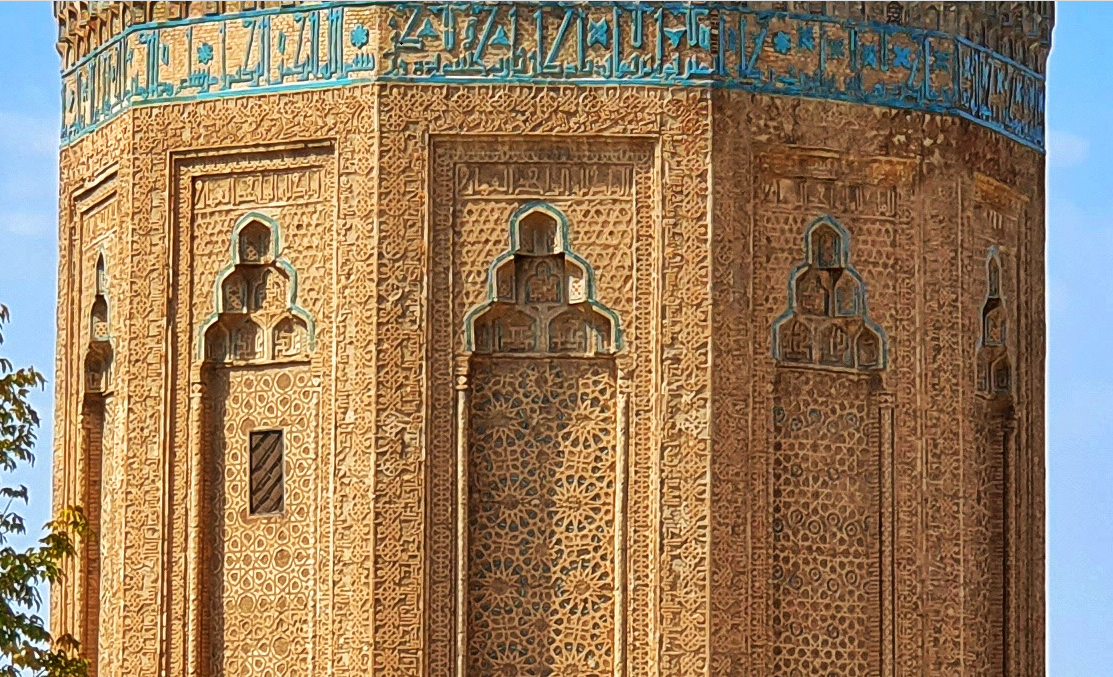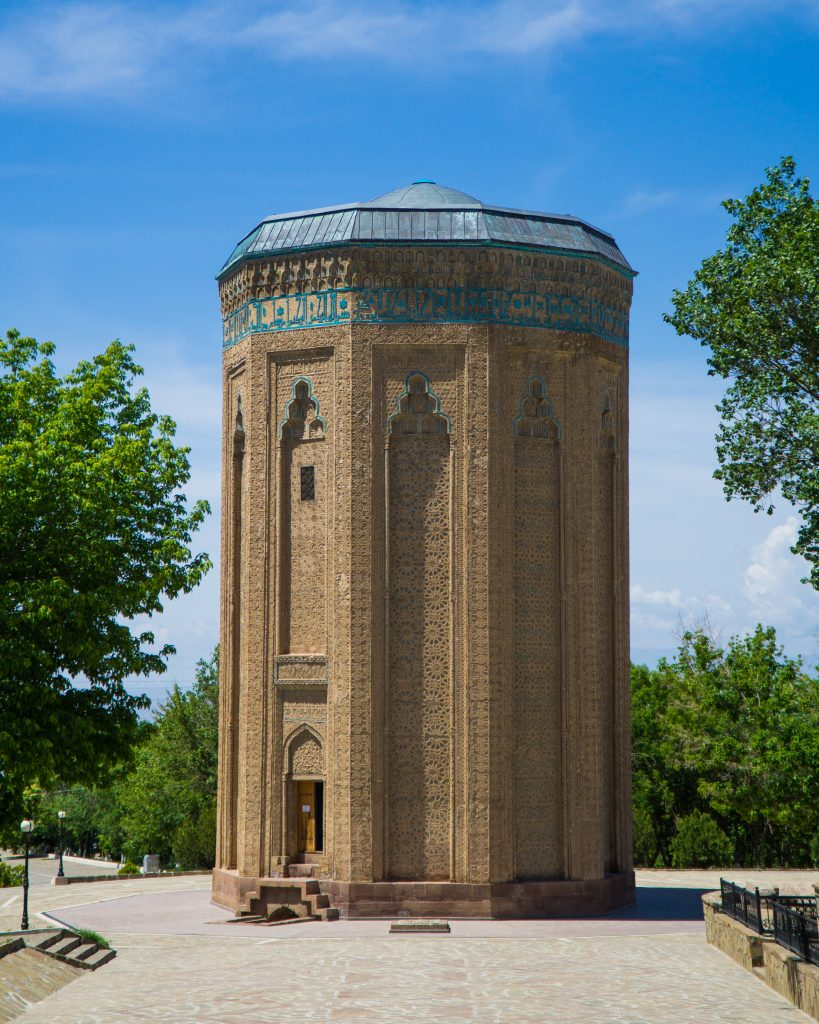Nakhchyvan
A nice example of the combination of 11- and 13-pointed stars is on the Mu'Mine shrine in Nakhchyvan (Azerbeidzjan 1186-87). Only when looking and counting closely you see that it bears 13- and 11-pointed star in an elegant looking pattern. As with 10- en 11-pointed stars the radii are not exactly in line with each other. You wouldn’t come on the idea of combining them although they fit fairly well. This doesn’t creates problem for the stars. The only consequence is for the surrounding pentagons. It looks disturbing while drawing them but the small
distortions hardly stand out while looking at the building. Follow stepwise the construction of the construction as described by Jay Bonner in his book Islamic Geometric Patterns (See references at the end).
The broadening of the lines and the showing of 11- and 13-sided polygons in glazed blue ceramic strips focusses the attention to the star pattern so that the distortion of the connecting pentagons doesn’t disturb the global harmony and balance.

The broadening of the lines and the showing of 11- and 13-sided polygons in glazed blue ceramic strips focusses the attention to the star pattern so that the distortion of the connecting pentagons doesn’t disturb the global harmony and balance.
The shrine in Nakhchyvan as built 10 years earlier than the Gonbad-e Kabud in Maragah and some 100 years after the Kharraqan towers. Putting them on a timeline we get:
- Western tower in Kharraqan (1068)
- Eastern tower in Kharraqan (1093)
- Gonbad-e Sork (1148)
- Mu'Mine shrine in Nakhchyvan (1186-87)
- Gonbad-e Kabud (1197)
